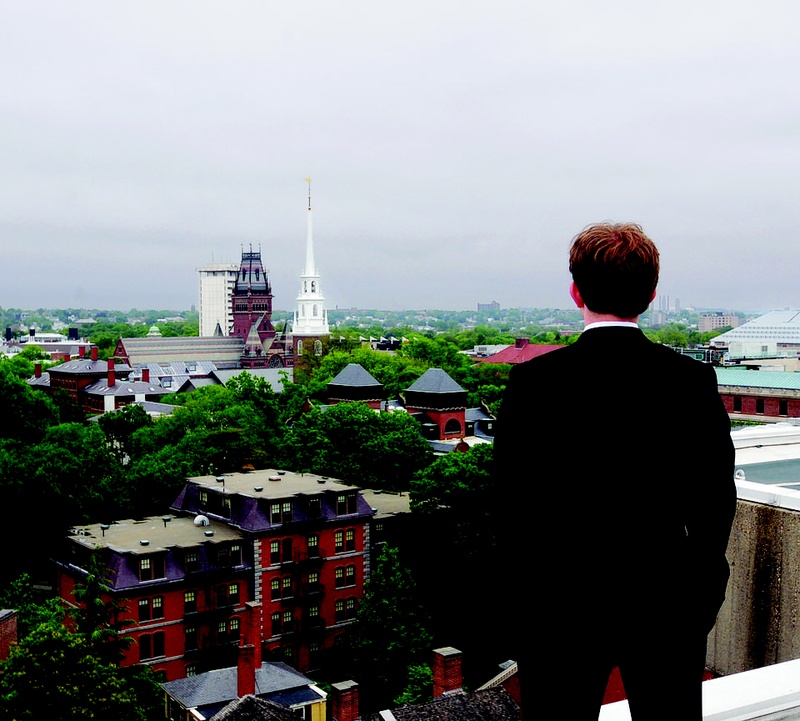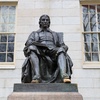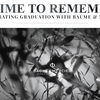When it became apparent that a cheating investigation was growing too large to hide, University administrators called in the experts—Harvard Public Affairs and Communications.
With talkative students soon returning to campus, officials had just a few weeks to act if they wanted to control how the world learned of the largest academic integrity case in the school's history. So, in mid-August, leaders from the College, the Faculty of Arts and Sciences, and the University's central administration convened with HPAC, the University's public relations apparatus, to hatch a plan.
They came up with an unconventional solution to an unconventional problem. First, communications staff would craft a story for the Harvard Gazette, the University-run publication, around a letter from FAS Dean Michael D. Smith about the proceedings of the cheating case—a process normally kept entirely secret. And second, HPAC would call reporters, one by one, into University Hall for 30-minute sit-downs with Dean of Undergraduate Education Jay M. Harris and FAS spokesperson Jeff Neal to hear the details of the case.
And on Aug. 30, the first day of movein for upperclassmen, HPAC executed the plan, setting off a controlled detonation that would become known as the Government 1310 cheating scandal.
“We needed to start a conversation about this, so we couldn't wait for this conversation to start in a different way or on different terms,” said Christine M. Heenan, vice president for public affairs and communications.
Never consulted in the decision to announce the case publicly was the body who was adjudicating it—the Administrative Board. That the professors atop Harvard's administrative hierarchy turned to seasoned public relations consultants rather than the Ad Board on the decision of if and how to share the news points to the weight that Harvard places on presenting itself to the outside world. As the reach and saturation of the news media have expanded in recent years and the target on Harvard's back has grown, the University has increasingly turned to behind-the-scenes actors whose mission is to streamline information and groom Harvard's image.
While leaders of that effort emphasize accuracy and access as their prime objectives, some say that the rise of HPAC has replaced openness with guardedness and a diverse dialogue with a homogenized message. At Harvard, they worry, the University's intensifying focus on public perception is blurring its vision.
HPAC ON THE RECORD
If HPAC sounds unfamiliar, it might be because it is good at its job. Perched on the top floor of the Holyoke Center, the offices of Harvard Public Affairs and Communications are easy to miss. But from high above Harvard Square, the nearly 60-person team can see all that it speaks for: the Yard, much of Harvard's Cambridge campus, its property in Allston, and even the three floors of the Boston Federal Reserve Building occupied by the Harvard Management Company.
Under one roof, and with one general goal, HPAC's employees are responsible for three main functions—advancing Harvard's interests in government, communicating with the public through the outside media and various digital outlets, and publishing the Gazette, an online and print magazine of Harvardrelated stories written by its own staff. Harvard's government and community relations unit splits its time and attention between Holyoke and anywhere off-campus that Harvard might have interests, from across the river in Allston to Washington, D.C., where staff members lobby lawmakers and several federal agencies on behalf of the University.
But the bulk of HPAC's work on campus is done by molding a message for Harvard to deliver. That means publishing its own stories in the Gazette, promoting content online, and issuing press releases. And by pooling requests from reporters and then reaching out to appropriate administrators or faculty, HPAC consolidates the flow of information in and out of the University.
“What we're supposed to bring to that table is how do we inform the audiences we need to reach in ways that are clear and informative and accurate and as comprehensive as possible,” Heenan said.
HPAC also acts as a hub, providing guidance for Harvard's 12 schools, most of which have their own communications staff of just a few people.
Excluding employees who work in the government and community relations unit, the number of full-time equivalent University employees who work for or service HPAC has nearly doubled, from more than 31 in December 2008 to 56 today, according to online archives of the communication division website and information provided by HPAC.
That rapid growth is the product of a dramatic shift in strategy and structure that has taken place at Harvard in only the last several years.
Read more in University News
The New Oldest Corporation in America













